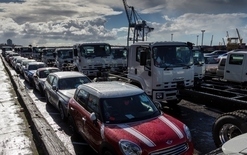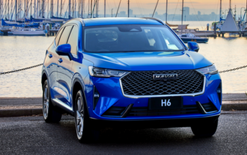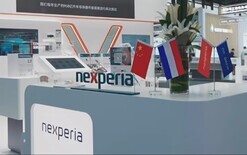ANCAP flags safety concerns

ANCAP is flagging up specification differences that may impact on road users’ safety with the release of safety ratings for Honda’s CR-V, ZR-V and select variants of the Civic.
A five-star rating has been confirmed for the e:HEV hybrid variant of the Civic sold in Australia. This rating remains in-line with the rating published by Euro NCAP.
Petrol variants of the Honda Civic, however, which aren’t sold in the European market, are built to and fitted with a “considerably different safety specification” to its hybrid sibling, says ANCAP.
The differences between hybrid and petrol Honda Civic variants include the omission of:
• A centre airbag, which helps protect against occupant to occupant and occupant-to-vehicle head injuries for front-seat occupants.
• Side thorax-protecting airbags for rear-seat occupants, which help minimise rib and chest injury in side-impact crashes.
• Speed-sign recognition and intelligent speed-limiter systems.
• Intelligent seatbelt reminders for rear-seating positions.
As a result of these differences, ANCAP is unable to determine how petrol variants would likely perform when put through rigorous testing, leaving the present status of petrol Civic variants as “unrated”.
CR-Vs sold on both sides of the Tasman have also been confirmed to hold a “different” safety specification to their European equivalents.
Local CR-V vehicles are sold with a “less sophisticated suite” of active collision-avoidance features – Honda Sensing rather than the elevated Honda Sensing 360 system – putting this model’s safety-assist score beneath the five-star threshold at 68 per cent.
In Europe, the CR-V is offered with an optional “safety pack”, which sees the higher-spec vehicles achieve a five-star rating while those without the pack have four stars. The higher-performing Honda Sensing 360 system isn’t offered, even as an option, in vehicles sold to Kiwis and Australians.
For the slightly smaller Honda ZR-V, the four-star rating for European-sold models has been confirmed for Australian models. However, local vehicles are “structurally different” to their European siblings.
A different front-bumper beam is fitted to Australian cars, which affected test performance in some test-impact locations. European vehicles are built with an additional beam in the rear doors, which is omitted from Australian-sold vehicles. “While no observable effect on test performance was identified, Honda is yet to provide information as to why the additional beam has been excluded,” says ANCAP.
During July, a three-star safety rating was published by Euro NCAP for new-generation Suzuki Swifts specified for and sold into the European market.
Suzuki Australia has informed ANCAP that the safety specification of Swifts sold on both sides of the ditch is different to those sold in Europe. Without testing of locally supplied vehicles, the safety rating is unknown.
ANCAP is currently undertaking testing of the locally supplied Swift to determine its safety performance. A result will be released on completion of this testing.
Aligning rating criteria
ANCAP and Euro NCAP took steps in 2018 to align test and rating criteria to encourage uniformity across markets and make it easier for marques to build the same levels of safety into vehicles destined for Australia or Europe.
This enables ANCAP to leverage safety performance results from European testing to publish independent ratings for a much larger number of models each year.
Importantly, each of the European test results and specification of vehicles actually supplied in Australia and New Zealand are scrutinised by ANCAP to ensure they are relevant and applicable to our local market.
Carla Hoorweg, ANCAP’s chief executive officer, says: “What we’re seeing here are manufacturers consciously providing Australian and New Zealand consumers with products that do not match the same levels of safety provided to European consumers. No doubt consumers will be surprised to learn of these differences.
“We are seeing some manufacturers prioritise higher levels of safety only in markets where the regulation requires it.
“Others are offering different safety specifications based on the expectations of dominant sales markets, production locations or markets with less mature consumer expectations.”
“While we do see this from time to time, we don’t want to see a more significant trend emerge.”
Government-enforced safety regulation has recently been enhanced for the European market with the introduction of EU General Safety Regulation (GSR2), while Australian regulation “remains years behind in some areas”.
Hoorweg, pictured, adds: “The lives and safety of Australian and New Zealand consumers are just as important as those in Europe or any other world region.
“That is why we continue to carefully examine new vehicles supplied locally and point out differences so consumers can make informed decisions. Any vehicle that’s unrated is a potential candidate for testing by ANCAP.”
Note: ANCAP says Honda Civic Type R variants are sold in some European countries but are unrated for the Australasian and EU markets.





